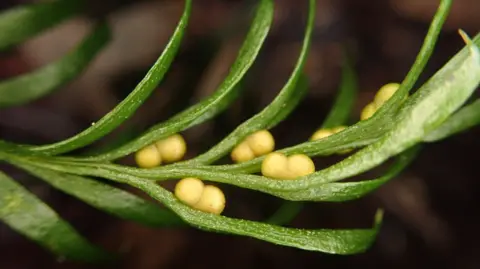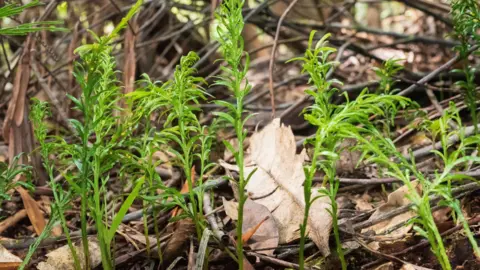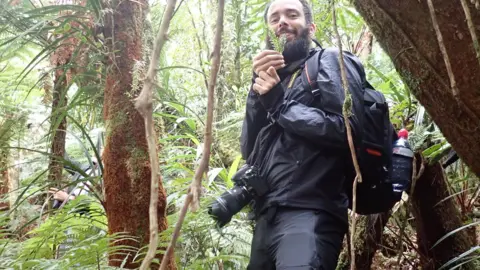ARTICLE AD BOX
11 minutes ago
Helen Briggs, Environment Correspondent, BBC News, @hbriggs

 Pol Fernandez
Pol Fernandez
The rare fern is found on the Pacific island territory of New Caledonia
A fern has entered the record books for having more DNA than any other living thing.
The plant’s genetic material, or genome, would reach about 100 metres when unravelled, outstripping Big Ben.
Scientists say it's a "crazy" amount of DNA for a tiny plant that most people would walk by without noticing.
"It's the biggest genome that has ever been discovered out of all organisms that live on this planet," Dr Ilia Leitch of the Royal Botanic Gardens, Kew, told BBC News.
“How does it function? How does it survive with that much DNA in it?”

 Pol Fernandez
Pol Fernandez
The mountainous landscape of New Caledonia is home to hundreds of unique plants and animals
The genome is the complete set of DNA instructions within a cell containing all the information needed for a living thing to develop and grow.
Many plants have big genomes and scientists want to find out why.
They hope to understand how this affects function – and might influence extinction risk.
The fern, known as Tmesipteris oblanceolate, belongs to a primordial group of plants that evolved long before the dinosaurs set foot on the earth.
It's found only on New Caledonia in the Pacific Ocean and a few neighbouring islands, where it grows on the trunks and branches of rainforest trees.

 Pol Fernandez
Pol Fernandez
Little is known about the ancient group to which the fern belongs
In the study, published in the journal iScience, international researchers extracted genetic material from specimens collected in New Caledonia.
They measured how much dye bound to the DNA – the more dye, the bigger the genome.
The fern was found to have a record-breaking genome size of 160 billion base pairs of DNA, which when unravelled would stretch out to about 100 metres.
By comparison, the human genome contains about three billion base pairs and would stretch to about two metres.

 Oriane Hidalgo
Oriane Hidalgo
The fern has no roots and grows on the bark of trees
The fern now holds three Guinness World Records for the largest genome, largest plant genome and largest fern genome.
Adam Millward of Guinness World Records said: “To think this innocuous-looking fern boasts 50 times more DNA than humans is a humbling reminder that there's still so much about the plant kingdom we don't know, and that record holders aren't always the showiest on the outside.”
Genomes great and small
Plants and animals contain most of their DNA coiled up inside the nucleus of each cell.
This genetic material, or genome, provides all the information the organism needs to function stored in long strands of DNA called chromosomes.
There is much variation in genome size. In the animal kingdom, some of the largest genomes include certain lungfishes and salamander at about 120 billion base pairs.
Not all plants have big genomes. The oak tree has a relatively small genome - if you stretched out all the DNA from a single cell of an oak tree, it would reach 66 cm.

 1 year ago
64
1 year ago
64








 English (US) ·
English (US) ·